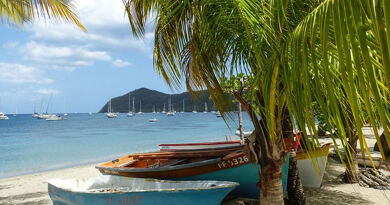Types of plantations in Martinique
The low tropical lands of Central America and the West Indies offered the European colonizer the opportunity to create an original socio-economic system. These regions, favorable to the cultivation of important export commodities, were hardly populated, and quickly the Amerindians were eliminated. The exploitation of the soil therefore did not have to comply with the constraints imposed in other regions by the presence of a large indigenous population. More than anywhere else, the development could meet only economic imperatives and the society which was built received the brand directly.
But the colonists who came to settle in these countries, in particular those who settled in the Lesser Antilles, underwent other pressures than those of their own needs: that of the European powers on which they depended; these very closely controlled the economic orientation of their American territories and channeled their activity according to their own interests. Also, the organization and the exploitation of these lands, centered on the priority needs of the metropolises, did not lead them towards an autonomous and balanced development. Thus was born a system where the monoculture of tropical products intended for export to a privileged market became essential, while the other local activities were slowed down, subsistence agriculture being reduced itself to its minimum. The exclusive prevented any autonomous development of trade and industry: from the outset, the Antilles, closely modeled by the economic life of the powers on which they depended, developed under the sign of this dependence.
These lines of force, around which the social organization which we can currently observe was developed, have impregnated this whole area with a certain unity. From Brazil to the South of the United States, passing through the Antilles and the eastern coasts of Central America, homologous structures emerged which characterize three essential elements:
the existence of large agricultural units devoted to the monoculture of products intended for export, social stratification where a landed aristocracy contrasts with a mass of manual workers, the coincidence of this social stratification and racial diversity. Everywhere, the ruling class is of European descent and maintains its ethnic identity through strictly controlled endogamy. The original contrast between white masters and black slaves may have been reduced by the abolition of slavery and the interposition of intermediate groups, but it did not disappear until socio-economic organization was established. fundamentally questioned. ” This brought this original configuration pointed out by Professor Jean Benoist at the start of his study: economic structures deeply marked by the needs and decisions of metropolitan areas, the duality of groups living and working these plantations intended to ensure the export and supply of metropolitan markets.
Jean Benoist notes: “Neither one nor the other (of the groups) occupies in an exclusive way the domain where it dominates and often this overlap leads to this ambivalence of affiliations and to these abrupt jumps from one system to another which strike the observer of African American cultures and the plantation societies in which they are embedded. This set is sufficiently eloquent that the entire American intertropical zone can be considered as a true cultural zone: the America of plantations ”.
The expression “plantation America” also includes the Lesser and Greater Antilles, these islands having been colonized at the same time and according to the same principles as the mainland. The “plantation system” then structured social organization.
Within this system, the typology of plantations has various forms:
the hacienda (an individual or a family), family housing (main feature of West Indian plantations) public limited company deriving from a “family home” (the family members who manage the property are employees of the company),




